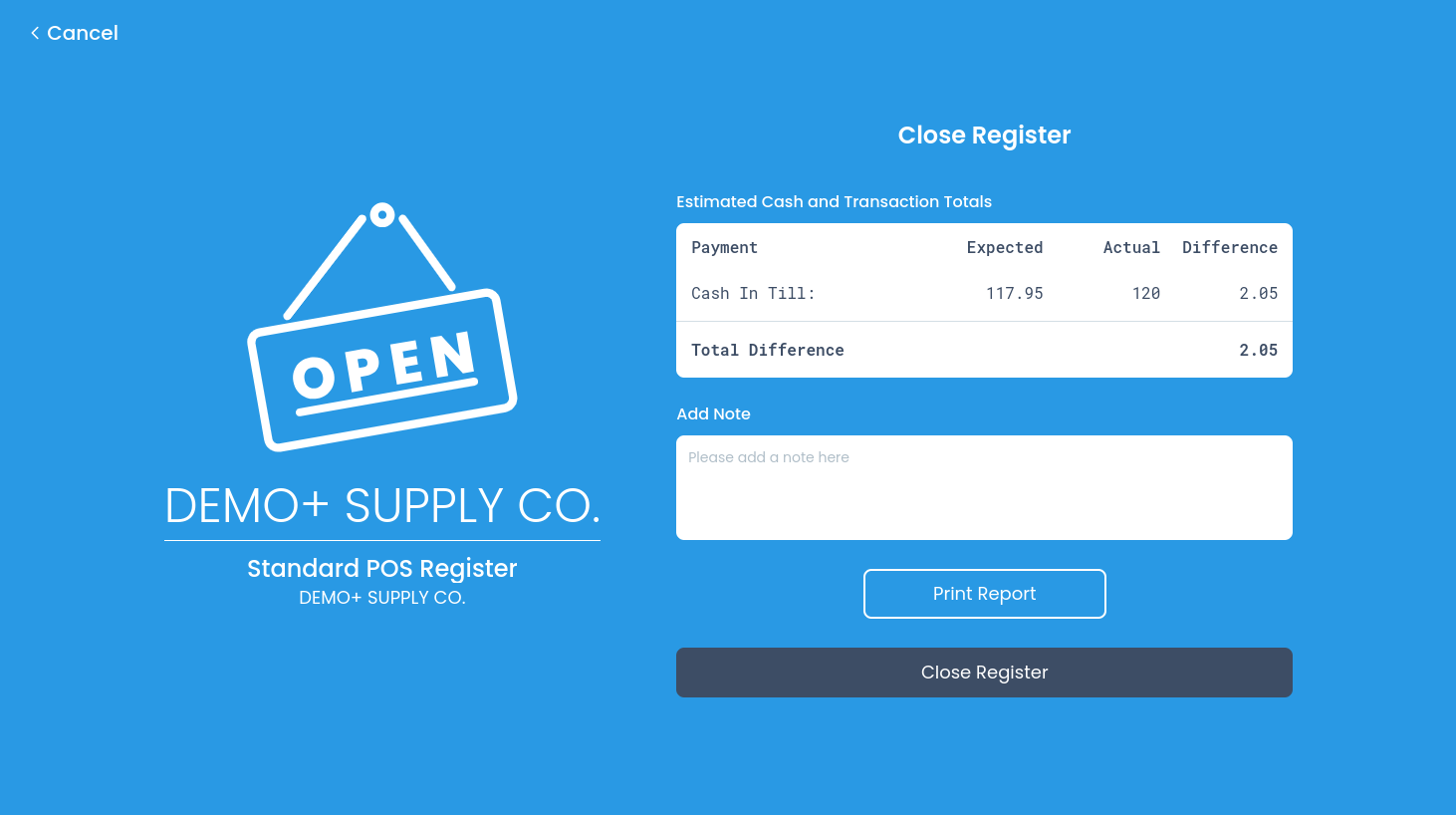NOTE: Cash Management is available on our Basic Plan and above. To find out more about our pricing and feature breakdown, please check out our pricing page!
What is Cash Management?
If you are accepting Cash as a payment method, our Cash Management feature brings the following useful functionality to your Oliver Register:
Manage opening and closing cash drawer count
End of Day reconciliation
Add/remove cash feature
End of Day and Cash Ledger reports
Enable Cash Management in the Oliver Hub
In the Oliver Hub, navigate to Settings --> Registers and click on the name of the register to access its individual settings. In this example we want Cash Management on Register #1:
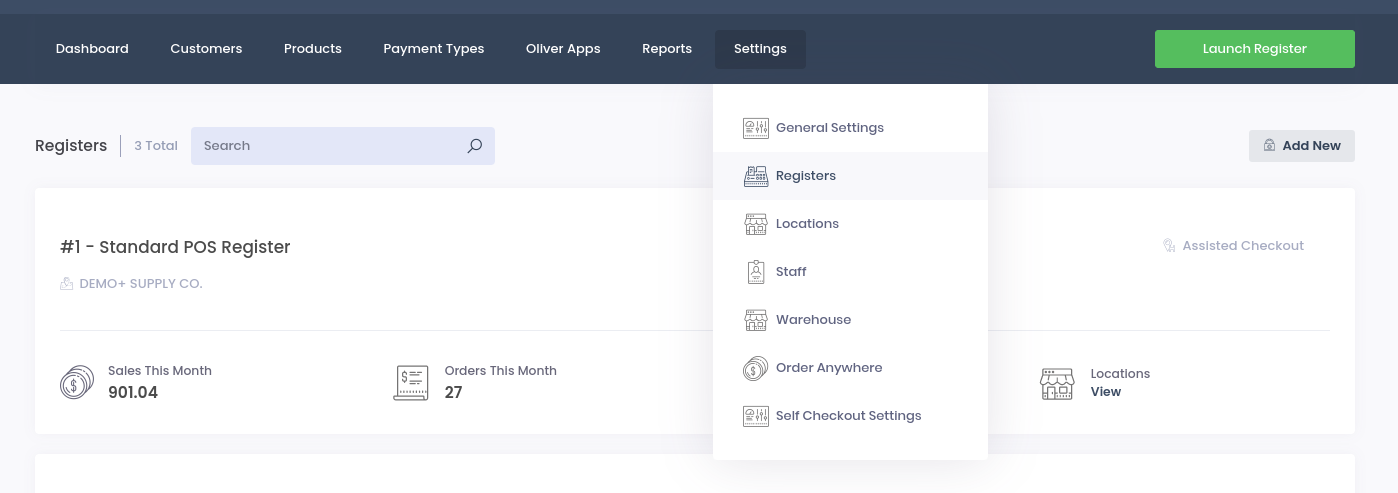
On the next screen under the Details tab, look for the option called Enable Cash Management. Select Yes, and don't forget to click Submit to save your new settings:
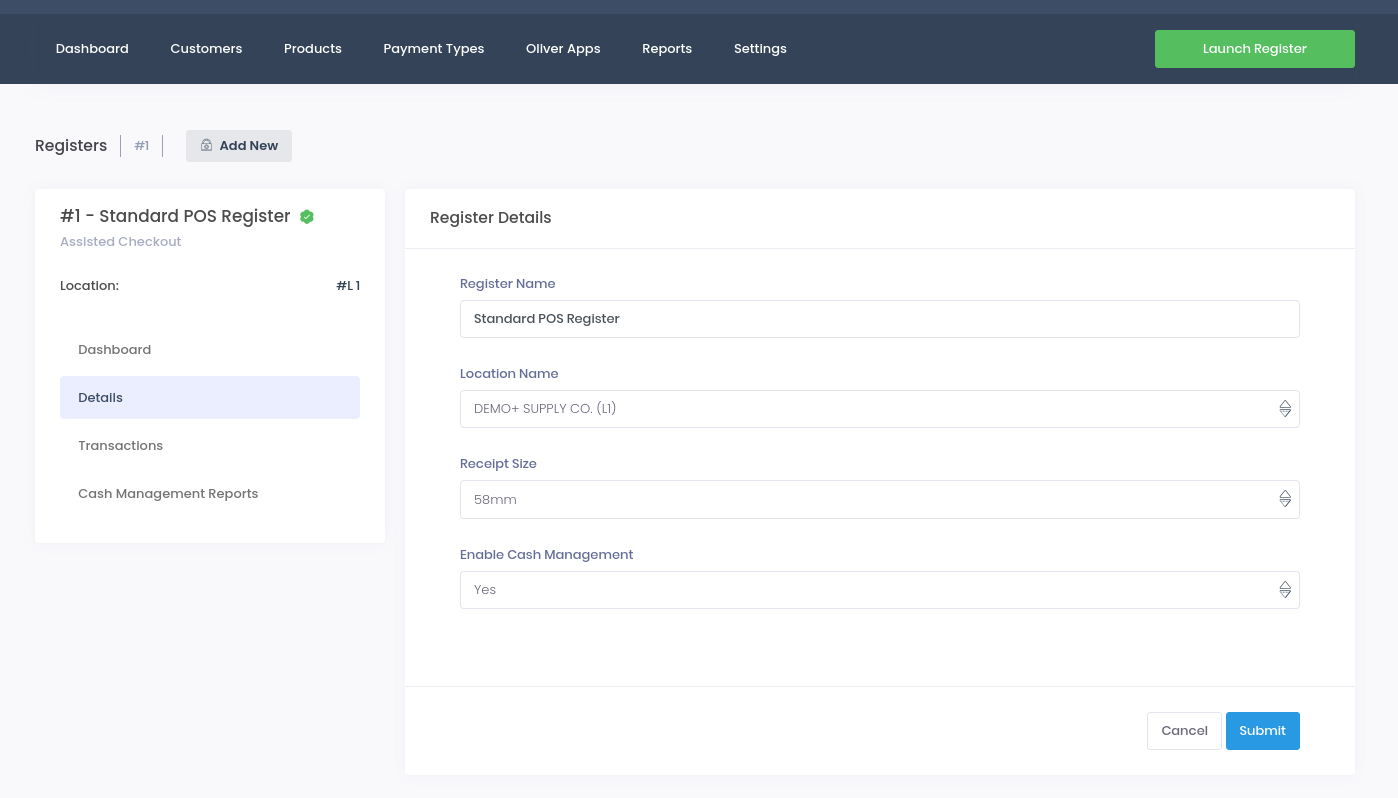
Next, let's re-launch the Register and see what's different.
Using Cash Management in the Register
The first thing you should notice is that the PIN screen should look a little different:

Select Open Register and enter your PIN. On the next screen, you can now enter your opening float. This will be your cash drawer's starting amount:
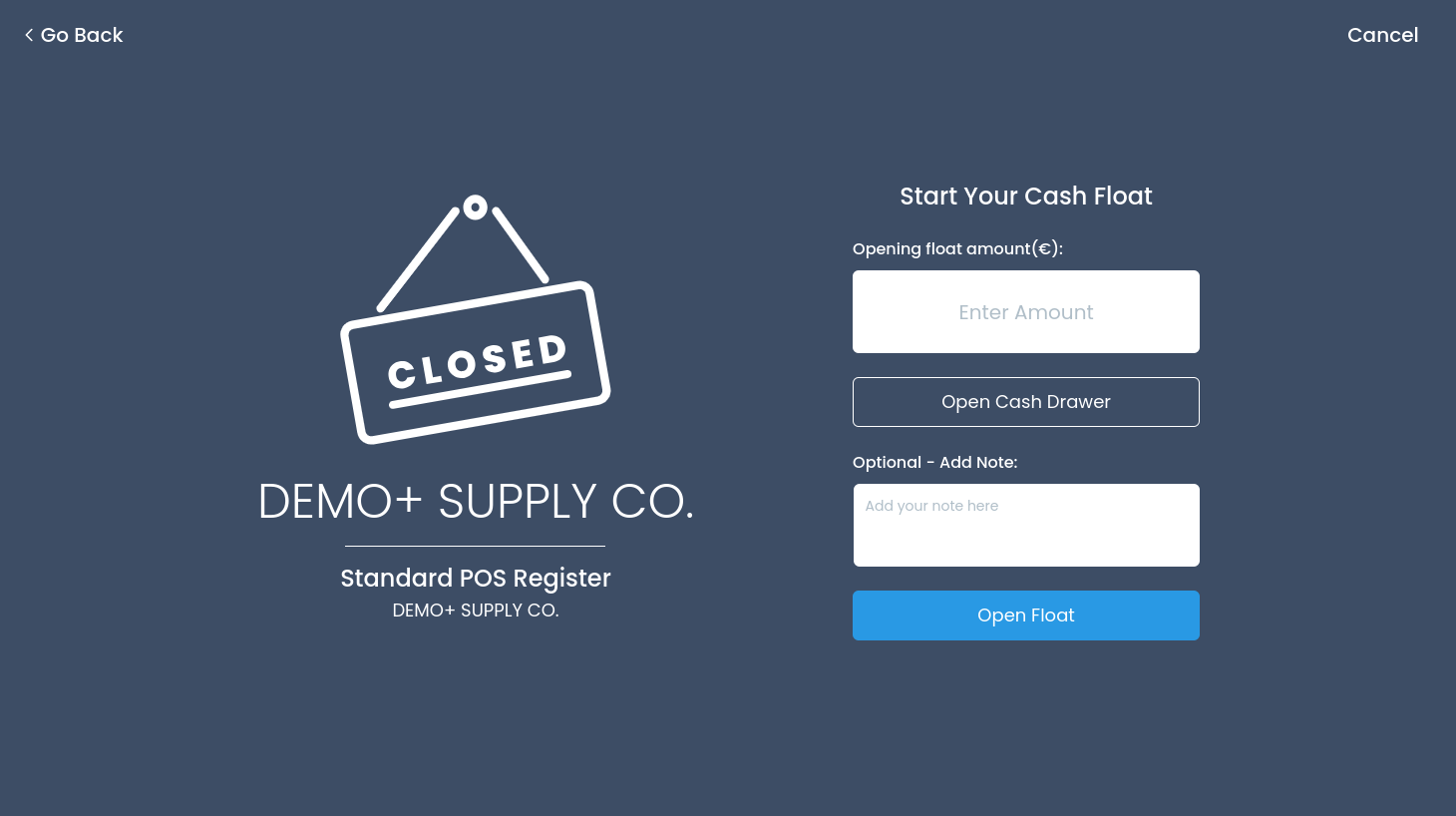
The Cash Management tab should now be available in the left sidebar:
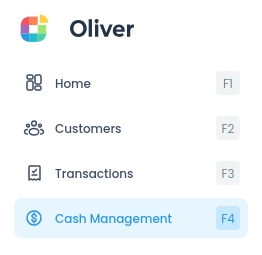
Adding/Removing Cash
Here's where you can monitor your cash drawer activity throughout the day, and add/remove cash as needed:
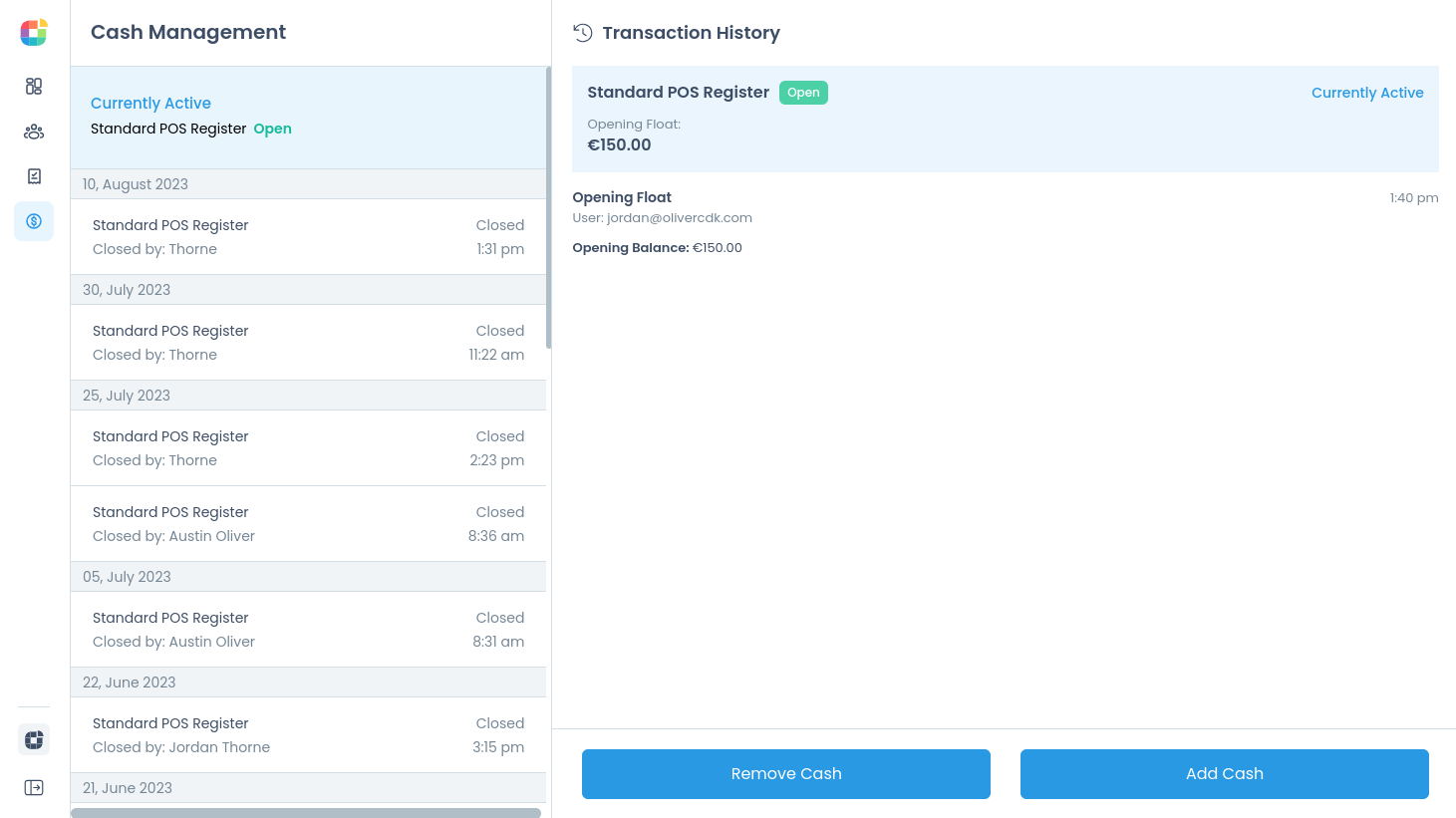
In this example, there were four(4) Cash Sales and one Manual Transaction which shows there was €300 removed from the cash drawer. The cashier also left a note to explain why:
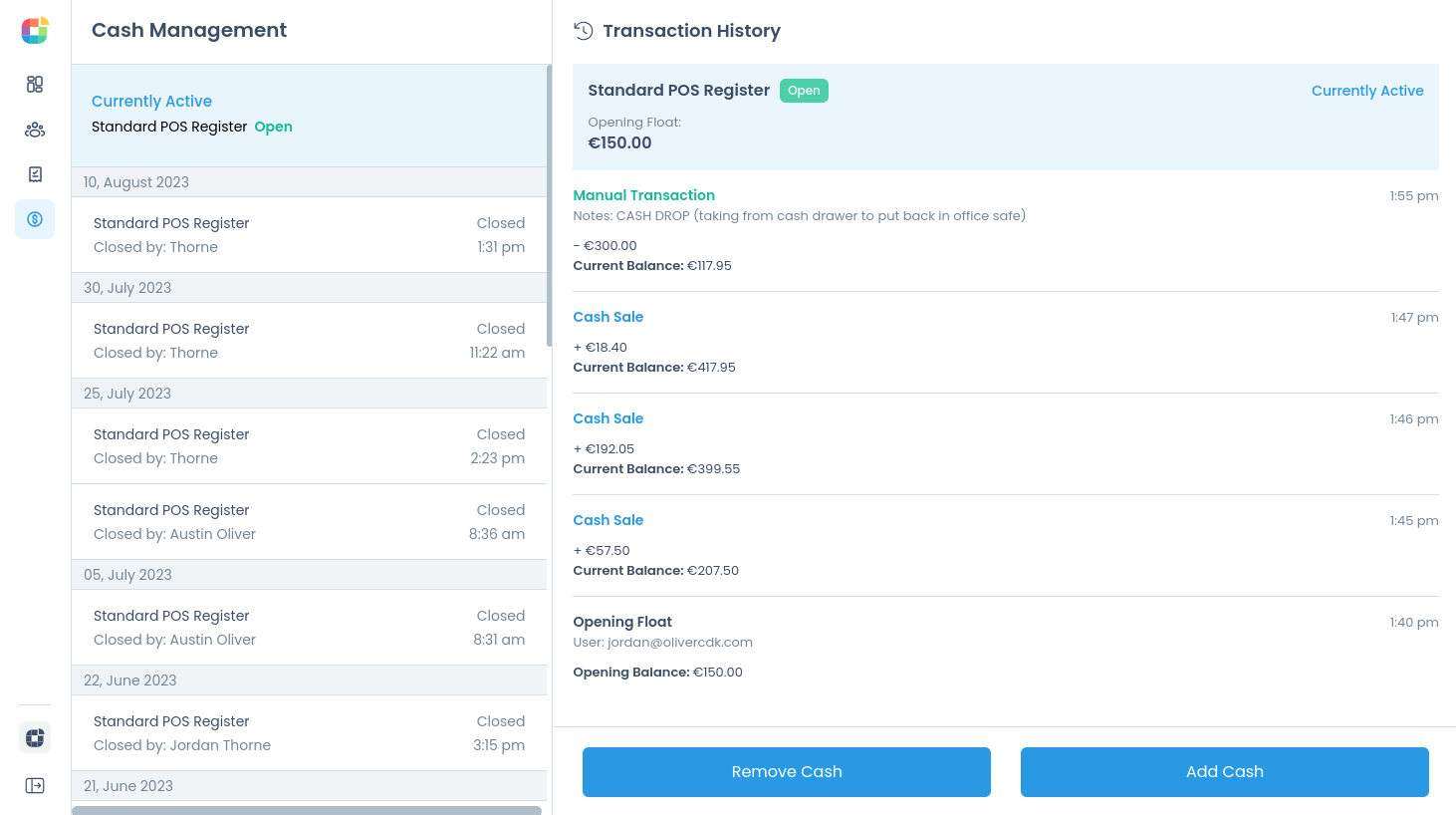
End-of-day Cash Reconciliation
When you're ready to close out the Register, select End Session to navigate back to the PIN screen:
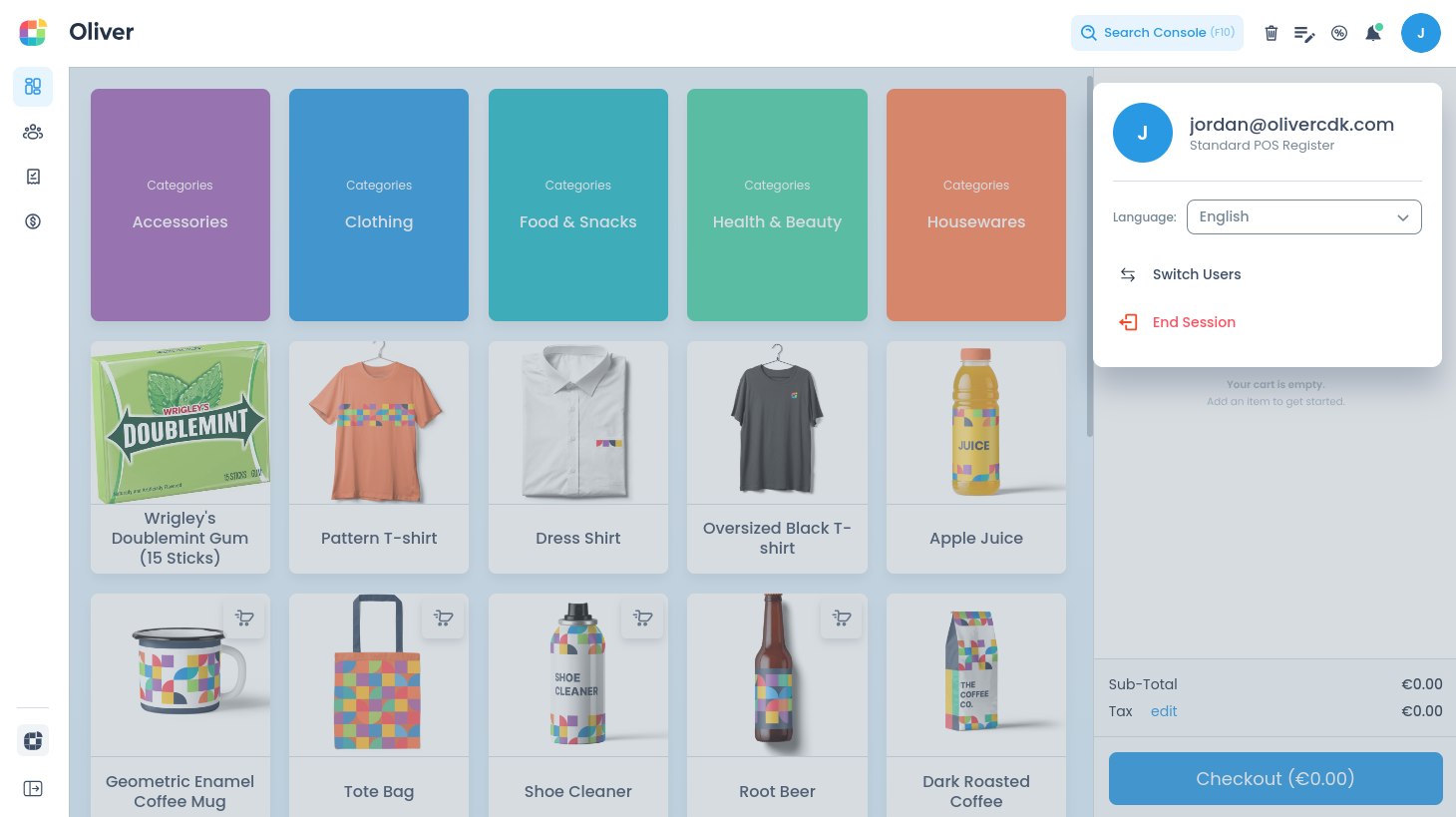
Select Close Register and enter your PIN. Once you've completed your cash drawer count, type the total in the Cash in Till field and select Save Count:

Here, Oliver will compare your expected cash amount to your actual counted amount, and calculate the difference:
